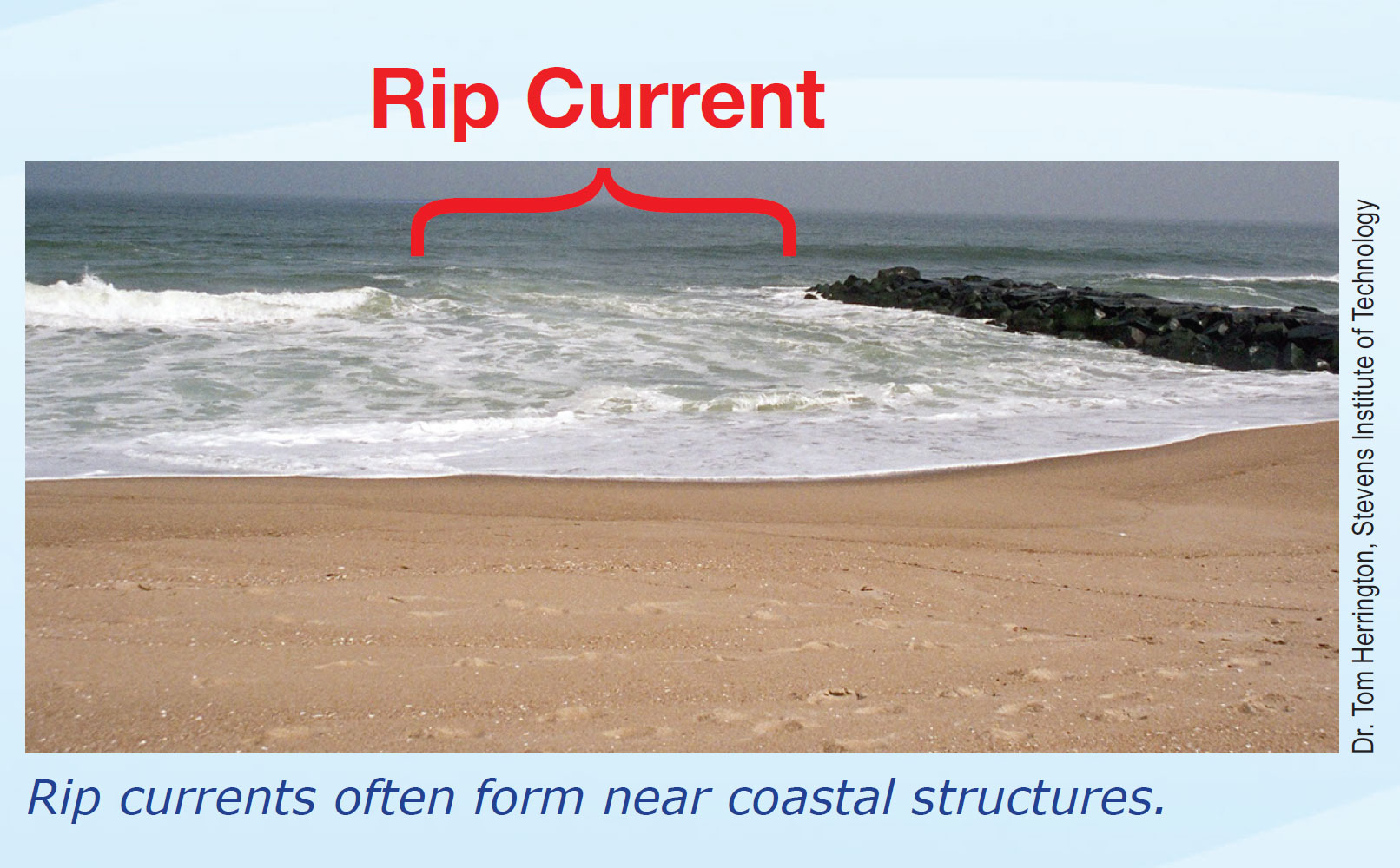
Rip currents account for more than 80% of rescues performed by surf beach lifeguards.
What are rip currents?
- Rip currents are channelized currents of water flowing away from shore at surf beaches.
- Rip currents typically form at breaks in sandbars, and also near structures such as jetties and piers.
- Rip currents are commonly found on all surf beaches, including Great Lakes beaches.
Why are rip currents dangerous?
- Rip currents pull people away from shore.
- Rip current speeds can vary from moment to moment and can quickly increase to become dangerous to anyone entering the surf.
- Rip currents can sweep even the strongest swimmer away from shore.
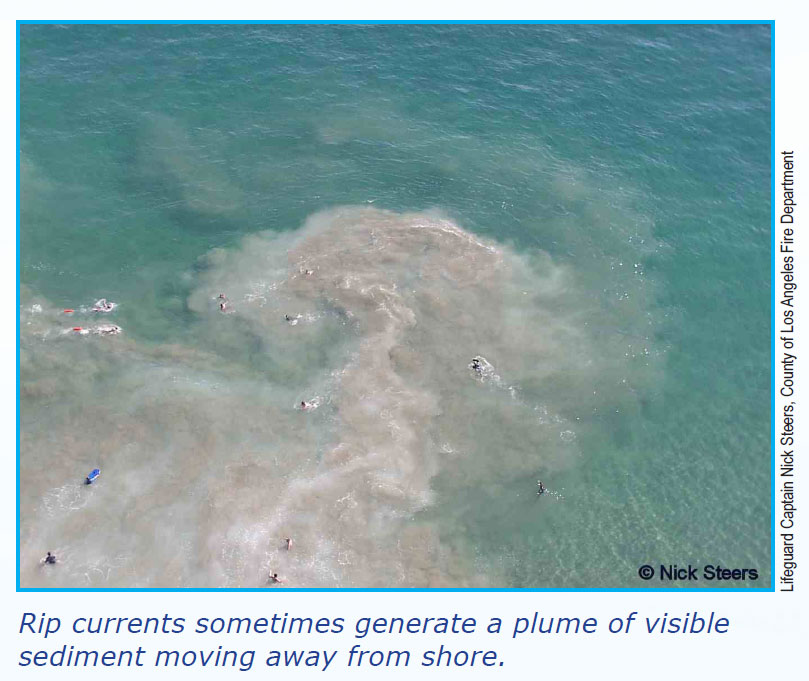 What are clues that a rip current may be present?
What are clues that a rip current may be present?
- A narrow gap of darker, seemingly calmer water between areas of breaking waves and whitewater.
- A channel of churning, choppy water.
- A difference in water color.
- A line of foam, seaweed or debris moving seaward.
What if I’m caught in a rip current?
- Relax, rip currents don’t pull you under.
- Don’t swim against the current.
- You may be able to escape by swimming out of the current in a direction following the shoreline, or toward breaking waves, then at an angle toward the beach.
- You may be able to escape by floating or treading water if the current circulates back toward shore.
- If you feel you will be unable to reach shore, draw attention to yourself. If you need help, yell and wave for assistance.
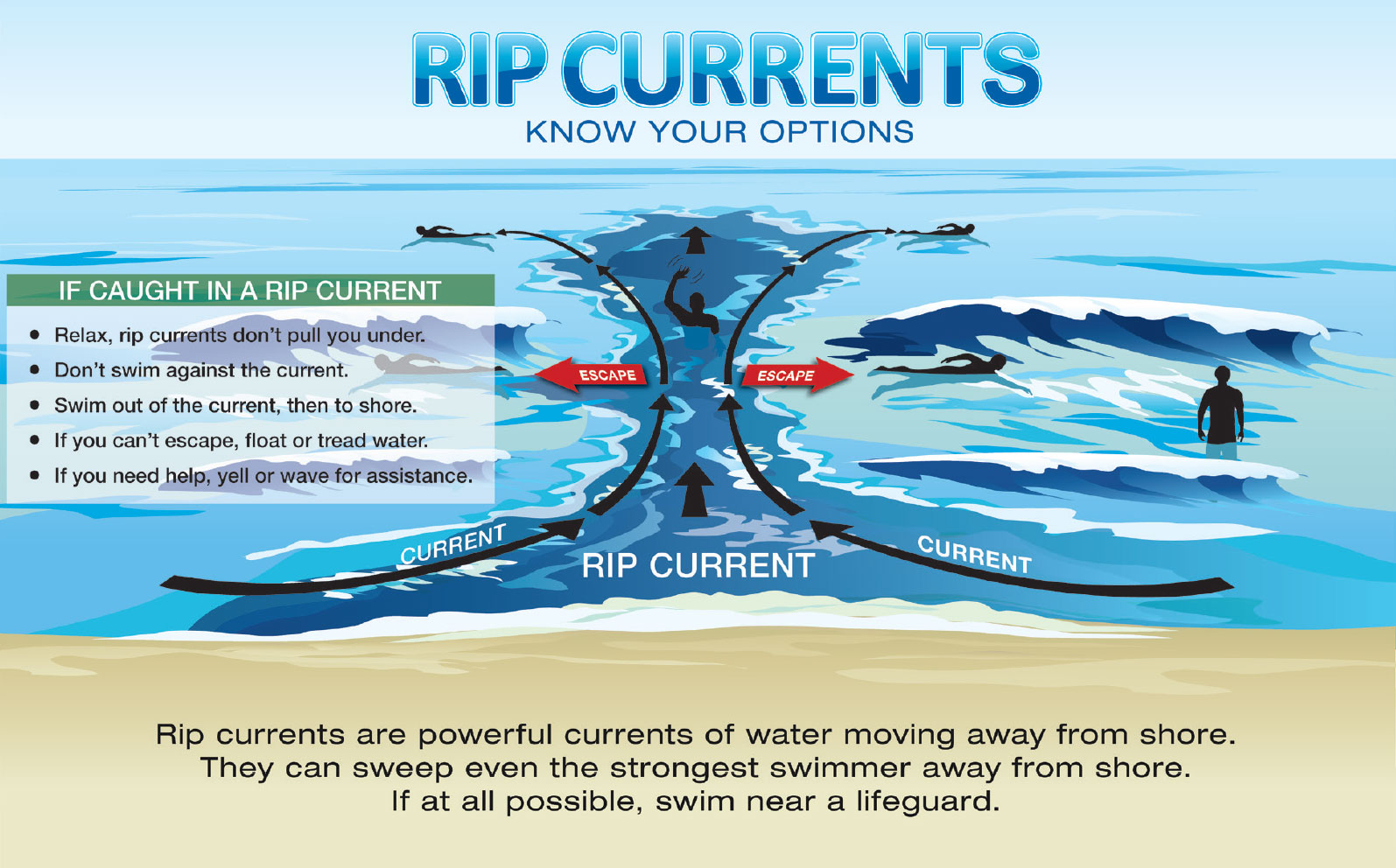
How do I help someone else?
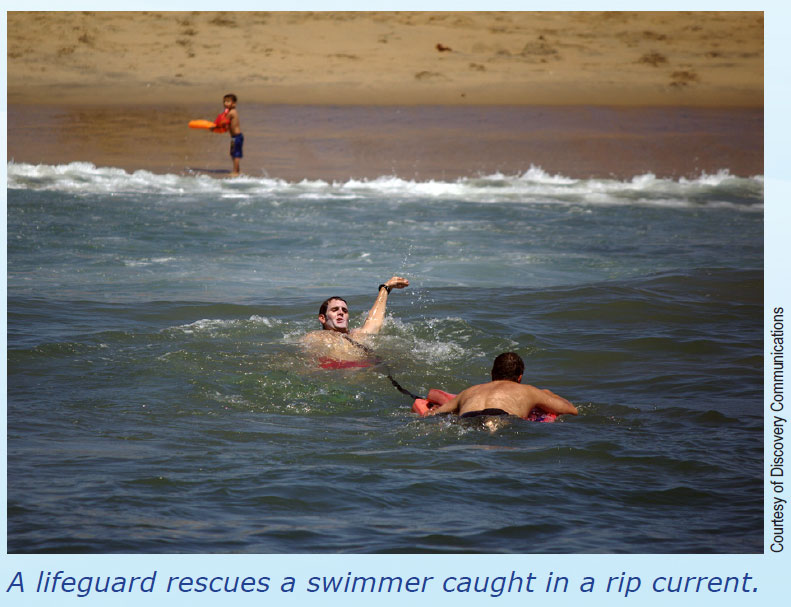 Don’t become a victim while trying to help someone else! Many people have died trying to rescue rip current victims.
Don’t become a victim while trying to help someone else! Many people have died trying to rescue rip current victims.
- Get help from a lifeguard.
- If a lifeguard is not present, call 9-1-1, then try to direct the victim to swim following the shoreline to escape.
- If possible, throw the rip current victim something that floats.
- Never enter the water without a flotation device.
Facts about rip currents
- Rip current speeds vary. Average speeds are 1-2 feet per second, but they have been measured as fast as 8 feet per second—faster than an Olympic swimmer!
- Rip currents can be very narrow or more than 50 yards wide.
- Sometimes a rip current ends just beyond the line of breaking waves; however, others may continue to flow hundreds of yards offshore.
- Rip currents do not pull people under the water—they pull people away from shore.
- Rip currents are sometimes mistakenly called undertow or riptides but these terms are not correct. Only the term rip currents is technically correct.
Safety tips
- Know how to swim.
- Never swim alone.
- If in doubt, don’t go out.
- Swim near a lifeguard.
United States Lifesaving Association statistics indicate that the chance of death by drowning at a beach protected by lifeguards is 1 in 18 million.
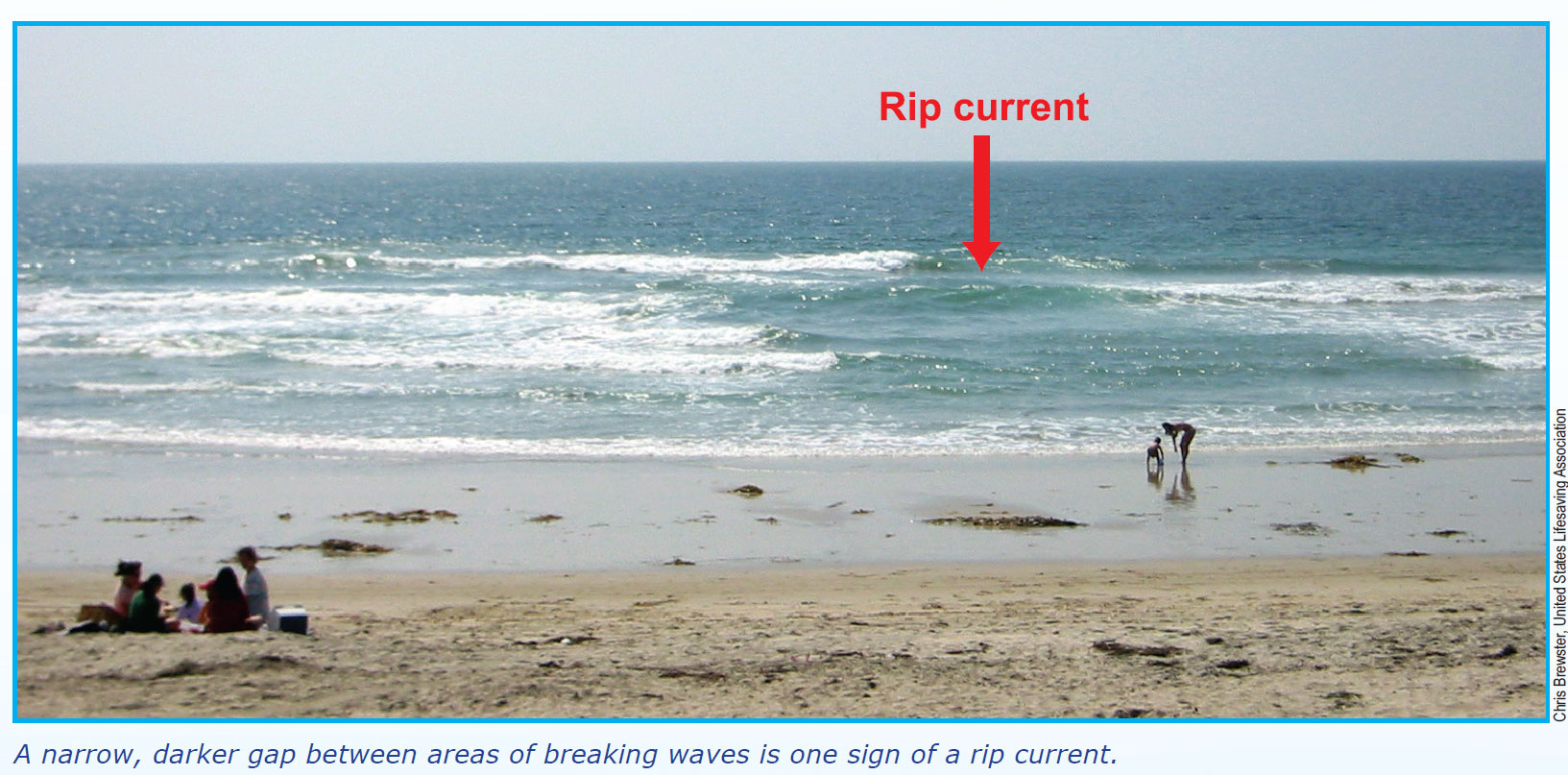
Where can I get more information about rip currents?
- Before you leave for the beach, check the latest National Weather Service forecast for local beach conditions.
- When you arrive at the beach, ask lifeguards about rip currents and other hazards.
- More information about rip currents can be found at the following web site: https://www.weather.gov/safety/ripcurrent
Additional helpful info: United States Lifesaving Association
